
Plant of the Month February 2024
GENERAL INFORMATION: We had few coniferous trees in our gardens when I was growing up in England. I do not remember any pines, spruces, junipers or cypress. We had some yews - small ones were dug up for Christmas trees. We thought all these evergreens belonged in Churchyards!
Our garden evergreens were various hollies, laurels and box. What a lot we were missing!
Chamaecyparis or false cypress has a wealth of species and cultivars. Forest trees are used for traditional Japanese structures (I was able to ask a Japanese Shakespeare scholar if a theatre was made of Hinoke wood to answer a US scholar’s question!).
Many small cultivars are wonderful accents in our rock gardens and troughs.
Our Chamaecyparis obtusa ‘Nana Gracilis’ was planted in 1994. I have removed and thinned some side branches. We call it “The Lone Pine” after the Tom Thompson painting.
Common Name: Dwarf Hinoke cypress, dwarf Hinoke false cypress.
Cultivars: Many Chamaecyparis obtusa cultivars, varying in size, shape and colour.
Life Cycle: Dwarf coniferous tree.
Chamaecyparis obtusa 'Nana Gracilis' Aug '16. C. obtusa ‘Nana Gracilis' Oct '23.
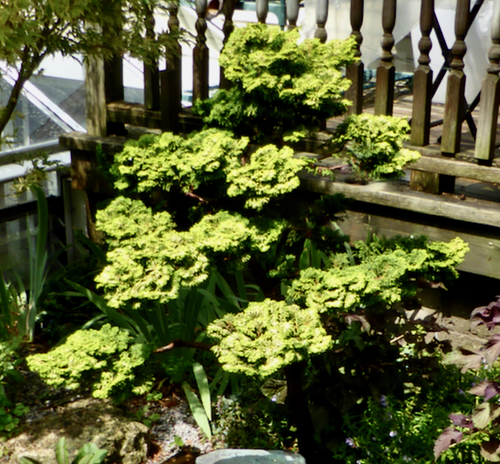
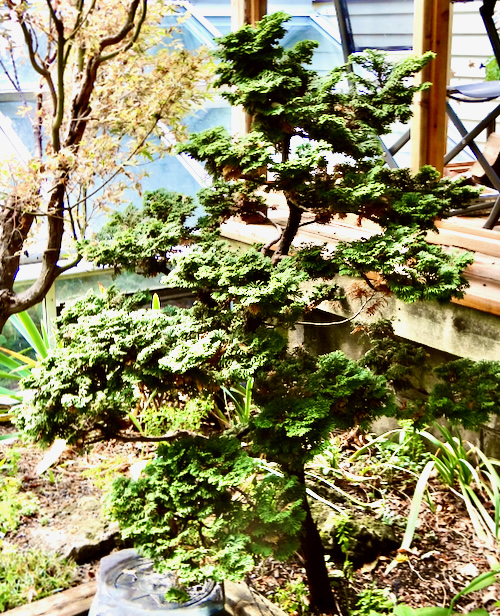
Flowers: Non-blooming. Reproduction by naked seeds in minute cones. The young female cones are green, becoming brownish red when mature. Male cones are more orange. My plant has not produced cones.
Height: 90-200 cm high, 60-120 cm wide after 10 years. My specimen is over 30 years old and is now about 110 cm high.
Chamaecyparis obtusa ‘Nana Gracilis' Jan '24.
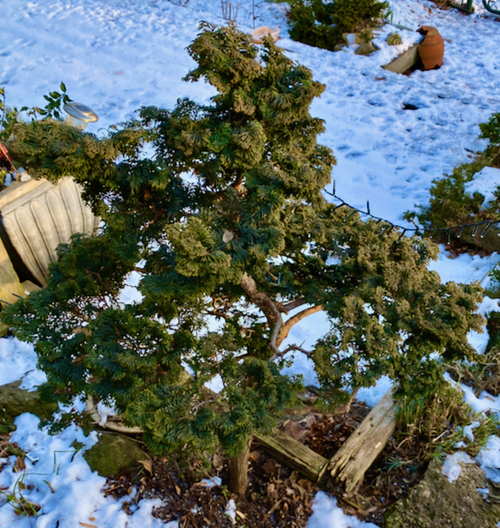
Bark: is reddish brown and will peel on older trees.
Leaves: Tiny green needles are like scales, up to 2 mm long, tightly packed forming shell like sprays at the ends of the branchlets. The colour is darker green in winter.
Chamaecyparis obtusa ‘Nana Gracilis' needles. Close up.
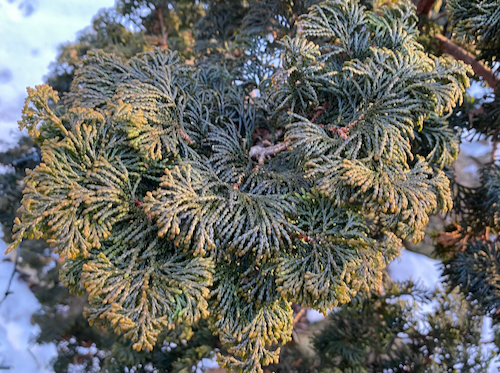
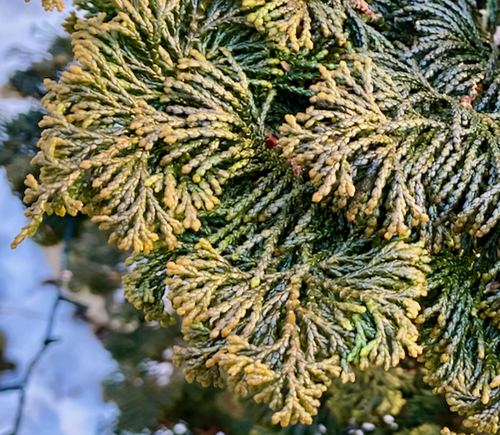
Range: Chamaecyparis obtusa is native to Central Japan.
Habitat: It grows on slopes in mixed coniferous forests.
CULTIVATION:
Low maintenance.
Light: Sun to partial shade.
Soil: All types of soil, preferring slightly acidic. Must be moist and well drained.
Water: Average.
USDA Hardiness: Zones 4-8.
Companion planting: Other rock garden plants or use as a specimen in the rock garden or in a trough.
Propagation: From semi hardwood cuttings or grafting.
Pruning: Not needed, unless to cloud prune.
Pests and diseases: Watch for aphids. Honey fungus and Phytophthora root diseases can occur but usually trouble free.
Native alternatives: Several Ontario or near Ontario native conifers have dwarf forms with interesting shapes. Look for cultivars of Juniperus virginiana, Pinus strobus, P. virginiana and Tsuga canadensis. (Pinus strobus ‘Angel Falls’, ‘Coney Island’ ‘Mini Twists’, Tsuga canadensis ‘Pendula’ etc.)
References:
https://www.missouribotanicalgarden.org/PlantFinder
https://www.gardenia.net/plant/chamaecyparis-obtusa-nana-gracilis
https://onrockgarden.com/index.php/germination-guide
Text and images supplied by Anna Leggatt (Toronto Master Gardener)
